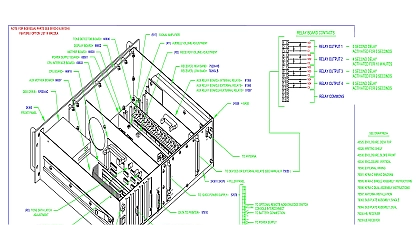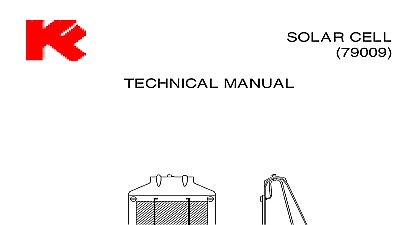Kingfisher Product Manuals

File Preview
Click below to download for free
Click below to download for free
File Data
| Name | kingfisher-product-manuals-6894231570.pdf |
|---|---|
| Type | |
| Size | 21.55 MB |
| Downloads |
Text Preview
WELCOME Company Foster Avenue Wheeling IL 60090 6574 847 f 847 e mail sales kfco com Internet www kfco com COMPANY e mail sales kfco com Internet www kfco com was founded as Carl J King and Company in 1967 by Carl J King When Emerson B Fisher a partner in 1970 the company was renamed King Fisher Company Both Carl and Emerson had experience within the radio fire and security communications personnel alerting systems PAS protection and alarm detection equipment industry prior to their involvement with King Fisher Since early 1970 the company has been involved in developing radio alarm systems including customized detection equipment and control panel systems Keeping abreast of new technological developments Company continually updates its systems and components 1981 the Company relocated to a newly constructed a state of the art manufacturing facility in Wheeling Shortly thereafter King Fisher developed a line of emergency dispatching and fire management programs Development of the computer aided dispatch CAD and computer fire management and CAD 2000 software products began in 1983 The software products have served to enhance King product line and broaden King Fisher position in the market SERVICES designs develops and manufactures state of the art emergency communication and fire detec and protection systems The Company sells complete systems as well as components for existing sys It also provides installation services for customers Components of a typical system sold by the might include one or more receivers processors radio call boxes interfaces evacuation devices antennas battery chargers and rechargeable batteries leading edge communications systems are based upon radio transmission technology Radio systems tend to be more economical than traditional hard wired systems In addition radio alarm facilitates rapid transmission of signals saving critical seconds during emergency situations radio systems can also be easily expanded due to the absence of hard wired connections The receiv station has an AM or FM FSK receiver which is specially designed for radio call box applications signals from up to 25 miles line of site away can be received and decoded by the receiver and without the need of a repeater King Fisher Company manufacturers a complete line of Repeaters can extend the range to any required distance or may be used in severe terrain locations the event of an emergency signals are sent either manually by a remote hand held unit or automatically box push buttons designated for Fire Security etc may be pushed manually Central control detection which monitor heat smoke other approved detectors or special functions i e Medical Security will automatically transmit signals to the receiving base station Received signals are then decoded and with an audio signal and visual display along with a written message which is printed and dis by the base station RADIO RECEIVING STATIONS KFRA C Base Radio Receiving Station is one of the latest state of the art emergency radio and signal processors on the market The unit detects and processes radio transmissions from FCC emergency radio call box transmitters The KFRA C is designed to interface with numerous detec and alerting devices as well as many computer aided dispatch management systems Units are powered 12 volt DC 50 ampere per hour batteries for 24 hours of standby power 48 60 and 90 hours also Memory units in the KFRA C enable the station to store up to 500 address identity numbers zones of radio call box transmitters used with the system The unit audio and visually displays emer messages and produces a permanent record of received signals is printed by a digital impact printer unit is available in a variety of configurations TRANSMITTER King Fisher KFAPT panel provides the most reliable and efficient means of transmitting radio coded and trouble signals to an Emergency Service Dispatch Center having a KFRA C radio fire alarm up to 25 miles away line of site connected to various array of addressable panels the KFAPT panel can transmit instantaneously up 1008 addressable devices Individual coded alarm and trouble signals include smoke detectors heat manual pull stations sprinkler flow tamper and much more In fact all alarm and trouble signals by the addressable fire alarm panel are duplicated by the KFAPT panel 2 sales kfco com Internet www kfco com TRANSMITTERS BOXES boxes are capable of transmitting emergency messages including FIRE SECURITY HAZMAT and MEDICAL AID The boxes have the capacity for 10 different messages including a and tamper message Messages are transmitted either by push button or automatically through the radio master box circuitry which is configured to transmit any pre programmed message manufactures a variety of different call box models and can adapt the transmitters for auto or manual tripping RADIO FIRE ALARM KFRTI CONTROL PANEL KFRTI 20 52 Radio Fire Alarm Control panel detects the operation of any approved signal initiating indicates by annunciator lamps the area of the alarm condition and operates all alarms auxiliary and releasing devices The KFRTI 20 52 control panel has a capacity of up to 52 alarm signaling zones KFRTI 20 52 Radio Fire Alarm Control panel can also serve as a Security panel and a Fire Protection Device panel Transmitter modules are also integrated into the KFRTI 20 52 panel ALERTING SYSTEM PAS Indoor Personnel Alerting Systems RIPAS Radio Outdoor Personnel Alerting Systems ROPAS available to protect a single building or an entire base Various models are available with a variety of decibel 80dB to 130dB warning tones These Systems have worldwide applicability King Fisher Fire Security or Evacuation System is capable of alerting military and civilian personnel a pending or specific danger We offer both automatic manual and combination tripping configurations PAS can be operated with six 6 warning tones and up to sixteen 16 pre recorded messages The also has the capability for real time public address for specific instruction or up dated transmissions the incident evolves PAS has worldwide applicability to include desert tropical and urban environments is adaptable to any building structure or tent city that military or civilian personnel may occupy The Systems are deployment ready sales kfco com Internet www kfco com 3 SERVICE SOFTWARE is also an important part of King Fisher product line King Fisher has developed and published wide variety of emergency service dispatch and management programs Dispatch and management pro offered by the company are described below Fire Dispatch Facilitates the dispatching of Security Dispatch Facilitates the dispatching PrePlan Displays during emergency situations regarding for example location of area hazards temporary construction etc HazMat Provides instant access to emergency information for over 2,500 hazardous personnel during emergency situations Equipment Status Provides current status of available emergency equipment Automatic Alarm Interconnect Integrates CAD CAD 2000 system into radio or wire alarm systems sells to a diversified customer base which includes military installations municipalities power and commercial and industrial facilities Due to the nature of the industry and market the composition the Company market base varies from year to year depending upon the current needs of the customer The following graph illustrates the general market segments which are served by the Company as well their current contribution to total Company sales SEGMENTS BY CONTRIBUTION TO REVENUE 2000 and Facilities Plants 4 sales kfco com Internet www kfco com illustrated in this graph a large portion of total sales is currently to military customers Military sales are independently to a large number of military bases and facilities within all branches of the Armed Overall the Company has numerous active accounts Organizations currently served by King Fisher Yokosuka Naval Base Japan Sasebo Japan Diego Garcia Pearl Harbor Guam Adak Alaska Saudi Antarctica Fort Belvoir Aberdeen Proving Grounds the Defense Logistics Agency Charleston Weapons Cente


